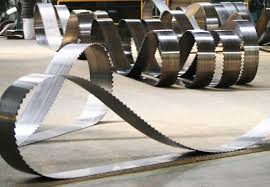Tech Tips
How to Transfer Film to Digital: Through Scanning Tips for Beginners
The process of transferring film to digital can seem daunting, especially for those who are new to the process. But with the right knowledge and tools, anyone can successfully digitize their precious film footage.
In this blog, we’ll explore what film transfer means, discuss how to transfer film to digital and provide tips for first-time film transfer enthusiasts. We’ll also explore the benefits of working with a professional film transfer service, such as Capture’s film digitization services.
What Does Film Transfer Mean?
Film transfer refers to the process of converting analog film footage, such as 8mm, 16mm, or 35mm film, into a digital format. This allows the film to be edited, preserved, and viewed on modern devices.
The process typically involves running the film through a film scanner, which captures each frame of the film and converts it into a digital file.
Can You Transfer Film By Yourself?
Yes, it is possible to transfer film by yourself. However, it does require a certain level of technical expertise and equipment. If you’re new to the process, it’s best to start with a small batch of film and work your way up as you become more comfortable with the process.
Tips for First-Timers
When it comes to transferring film to digital, take the proper steps to ensure the best results. For first-timers, it can be overwhelming to know where to start, but with the right knowledge and preparation, you can ensure your film transfer goes smoothly. Here are some tips:
Before You Convert
Know the original format
Before you begin the film transfer process, it’s crucial to know the original format of your film. Different types of film, such as 8mm, Super 8, and 16mm, will require different types of equipment and methods to transfer.
Knowing the original format will help you determine the best course of action for your film transfer.
Sort and label your media
It’s a good idea to sort and label your media. Organizing your film reels by date, event, or any other way that makes sense to you, will make it easier to find the footage you need later on.
Ensure you have the proper equipment
Be sure you have all the necessary equipment ahead of time. This includes a film projector or reel-to-reel player, a steady surface to project or play the film on, and a high-resolution camera or scanner to capture the images.
Additionally, it’s important to have a clean and well-lit area too.
Preparing your film for conversion
Make sure the film is not exposed to the open air for too long
If you are transferring old film reels, make sure your film has not been exposed to the open air for too long. This can cause damage to the film and affect the quality of the final product.
Inspect the film for damage
Before you begin the transfer process, inspect your film for any damage, such as scratches, creases, or warping. If you notice any damage, address it before the transfer process, as it can affect the final quality of the digital transfer.
Clean the film
Clean your film using an air duster or film cleaning solution to remove any dirt or dust that may have accumulated over time. This will help ensure a precise, high-quality transfer.
Consider a Film Transfer Service
While it is possible to transfer film by yourself, working with a professional film transfer service can save you time and ensure that your footage is transferred correctly.
Capture’s film digitization services provide high-quality, professional film transfer services. They have the experience and equipment to handle even the most delicate film footage, and their turnaround time is quick.
Instead of spending time trying to figure out if you are transferring your film correctly, use one of the services available online and get it done fast and efficiently.
Conclusion
Transferring film to digital is a tough task for beginners, but with the right knowledge and preparation, it can be a successful and rewarding experience.
The benefits of having your film in digital format include increased accessibility and durability and the ability to share and preserve these memories for future generations.
If you’re feeling overwhelmed by the process, consider reaching out to a professional film transfer service like Capture, which has the expertise and equipment to ensure your film is properly digitized to the highest standards.
Related Posts












